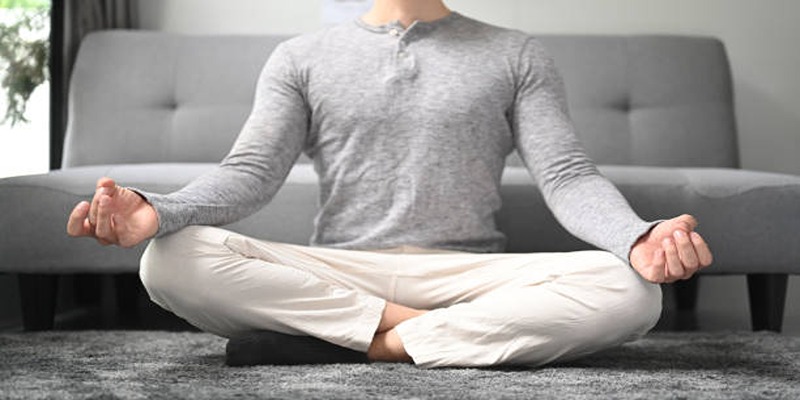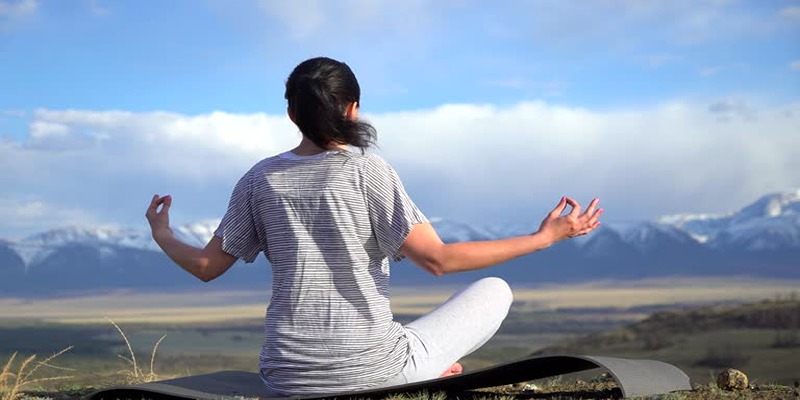For individuals who find traditional meditation challenging, moving meditations offer a dynamic alternative that harmonizes body and mind. These practices allow for active engagement in mindfulness, making them ideal for those who struggle with sitting still. Moving meditations encompass a wide range of activities such as walking, yoga, tai chi, and dance, each offering a unique way to cultivate awareness and presence. By focusing on the rhythm and flow of movement, practitioners can achieve a meditative state even as they remain physically active. This approach not only benefits mental clarity and emotional well-being but also enhances physical health and vitality. Whether it's a gentle stroll through nature or a graceful yoga session, moving meditations cater to different preferences and needs, demonstrating that mindfulness can be a versatile and accessible practice for everyone.
Walking Meditation

Walking meditation is a simple yet profound practice that involves being fully present while walking. It is often done in a quiet, tranquil setting, such as a park or garden, but can be practiced anywhere. By bringing awareness to each step, individuals can transform an ordinary walk into a powerful meditative experience. Practitioners focus on the sensations of their feet touching the ground, the movement of their legs, and the rhythm of their breath.
This mindful approach keeps the mind anchored in the present moment, reducing stress and enhancing emotional balance. Walking meditation is accessible to people of all fitness levels, making it a practical option for integrating mindfulness into daily life.
Yoga Practice
Yoga, a well-known practice that merges physical postures with breath control and meditation, offers another form of moving meditation. Through its deliberate movements and focus on breathing, yoga helps practitioners cultivate mindfulness as they transition through different poses. Each posture encourages body awareness and alignment, allowing individuals to connect deeply with their physical and mental states. As practitioners focus on the sensations within each pose, the mind gradually quiets, leading to a more centered and calm state of being.
Whether it's a dynamic vinyasa flow or a calming hatha sequence, yoga allows for tailored experiences that suit various levels of skill and energy. With its emphasis on balance, strength, and flexibility, yoga contributes not only to inner peace but also to overall physical wellness, making it a comprehensive practice for both the body and mind.
Tai Chi
Tai Chi is a centuries-old Chinese martial art that has evolved into a graceful form of moving meditation. Known for its slow, flowing movements, Tai Chi emphasizes continuous, relaxed motion, balance, and breath control. During practice, individuals focus on the seamless transition from one posture to the next, promoting harmony between body and mind. This meditative movement encourages the flow of "qi" or life energy, which is believed to enhance mental clarity, emotional stability, and overall health. Tai Chi is renowned for its ability to improve balance, flexibility, and muscle strength, making it particularly beneficial for seniors.
Due to its gentle nature, Tai Chi is accessible to people of all ages and fitness levels, offering a serene pathway to mindfulness and well-being. Whether practiced alone or in a group setting, Tai Chi invites practitioners into a deeply peaceful and meditative state that enriches both the body and the spirit.
Dance Meditation
Dance meditation combines the expressive movement of dance with the reflective nature of meditation, offering a lively and joy-filled approach to mindfulness. This practice encourages individuals to tune into their bodies and emotions, allowing the music and rhythm to guide them into a state of flow. Unlike structured traditional dance, dance meditation is freeform and improvisational, enabling participants to express themselves without judgment or set expectations. By focusing on the sensations of movement and the emotions they evoke, individuals can enter a meditative state that fosters self-awareness and release.
Dance meditation not only enhances emotional expression and creativity but also serves as an excellent aerobic exercise, improving cardiovascular health and boosting mood. Its adaptability makes it a suitable choice for anyone seeking a meditative practice that is as invigorating as it is grounding.
Qigong

Qigong is an ancient Chinese practice that combines gentle physical movement, meditation, and breathing exercises to cultivate and balance the body's energy, or "qi." Known for its rhythmic, slow-paced exercises, Qigong offers a meditative approach to enhancing physical and mental well-being. As practitioners engage in controlled movements and focused breathing, they nurture a sense of harmony and tranquility. The practice helps improve circulation, flexibility, and balance, making it accessible to people of all ages and fitness levels. Qigong can be performed standing, sitting, or moving, providing flexibility in practice routines.
Its restorative nature not only boosts physical health but also reduces stress, strengthens the immune system, and fosters a deep sense of inner peace. Embracing Qigong as a moving meditation means embarking on a journey to reconnect with oneself through patient, mindful practice, and the cultivation of vital life energy.
Swimming Meditation
Swimming meditation is an innovative approach that combines the meditative aspects of mindfulness with the serene environment of water. By focusing on the gentle repetition of strokes, the feel of the water, and the rhythm of breathing, swimmers can cultivate a deep sense of presence and tranquility. This form of moving meditation allows for a unique sensory experience that engages both the body and mind in a harmonious flow. The buoyancy of water can alleviate stress and tension, leading to a more relaxed state. As practitioners concentrate on their movements and the sensations around them, they can enter a contemplative state, finding clarity and peace amidst the gentle waves.
Swimming meditation not only improves cardiovascular fitness and muscular endurance but also offers a refreshing way to achieve mindfulness, connecting individual awareness with the natural ebb and flow of water. Whether in a pool or open water, this approach provides an immersive experience that nurtures both physical health and mental wellness.
Running Meditation
Running meditation combines the physical benefits of running with the mental clarity and focus of meditation. While running can be a repetitive and rhythmic activity, integrating mindfulness into the process transforms it into a meditative journey. Runners are encouraged to focus on their breath, the sound of their footsteps, and the rhythmic motion of their limbs. As they attune to each sensation, they often experience an enhanced connection to their surroundings and an increased sense of relaxation.
This practice not only boosts cardiovascular health and builds endurance but also alleviates stress and sharpens mental focus. By transforming a typical run into a mindful experience, individuals can cultivate a deeper appreciation for the present moment, leading to improved well-being and happiness. Running meditation is accessible to all levels of runners, providing a unique opportunity to merge movement and mindfulness into daily life.
Conclusion
Incorporating moving meditation practices into daily routines offers a transformative path to enhanced physical and mental well-being. Whether its through the gentle flow of Tai Chi, the expressive freedom of dance meditation, the harmonious balance of Qigong, the serene immersion of swimming meditation, or the rhythmic journey of running meditation, each approach presents unique benefits. These practices not only promote mindfulness and stress reduction but also improve physical health metrics such as flexibility, balance, cardiovascular fitness, and muscular strength. By embracing these diverse forms of moving meditation, individuals can cultivate mindfulness in motion, fostering a more joyful, healthy, and harmonious way of life.



